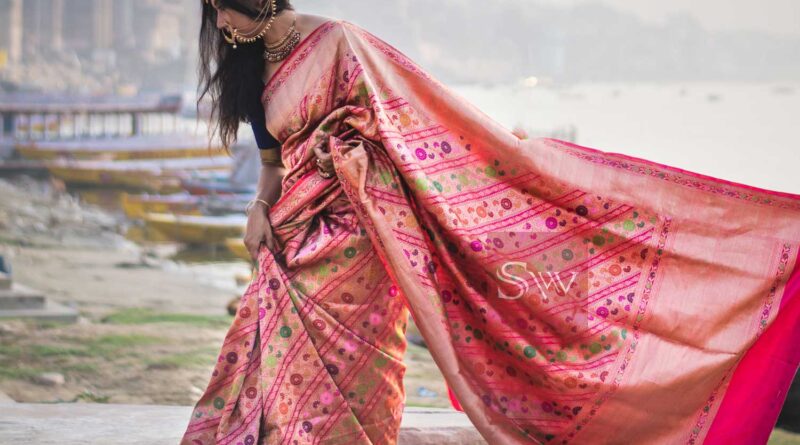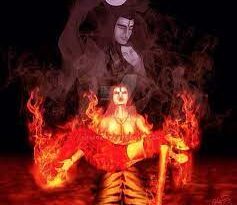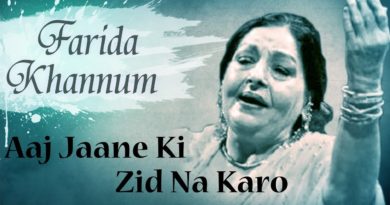Sarees A Woman Must Have
Saree is a very integral part of all Indian women and girls. So if you are looking for a saree to slay on an occasion? Let’s know about 10 types of sarees from all across India, that Indian women should have in their wardrobe.
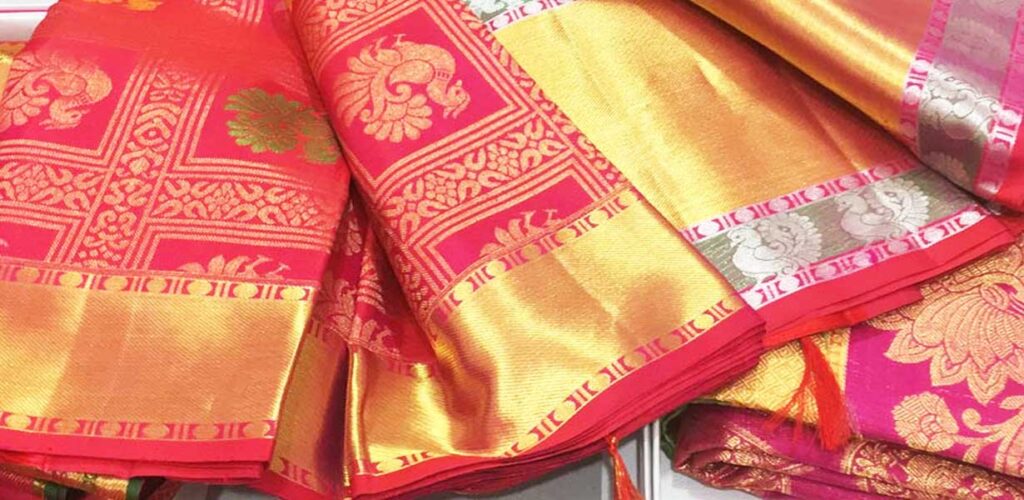
Banarasi Saree
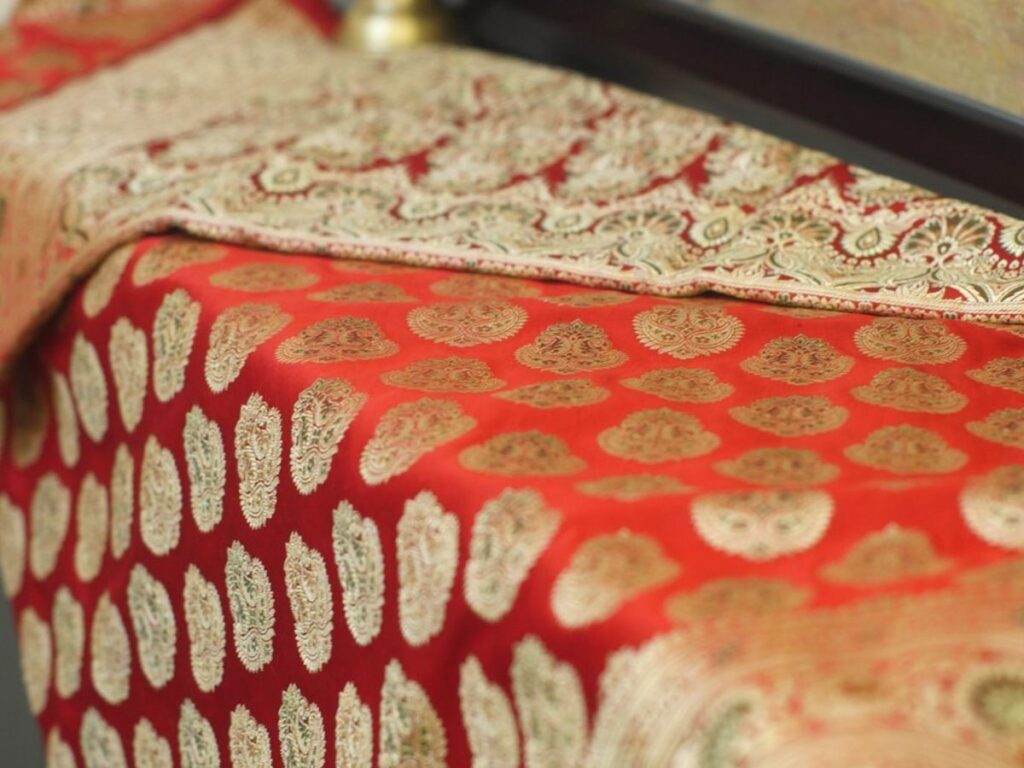
All the way from Varanasi or Banaras. These are some of the finest varieties of sarees in India. They are fine silk sarees with work of gold and silver. Beautiful work from brocade and zari is done on it. These sarees are relatively heavy. Due to the heavy intricate designs. Depending upon the complicacy of designs. These sarees can take 10 days to more than a month. At times it takes 6 months to complete a single one.
Chikankari Saree
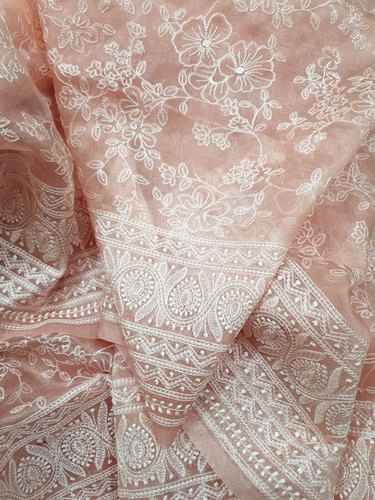
Chikan is an intricate embroidery. Silk, organza, cotton, chiffon, etc are used in making chikankari sarees. It is beautiful and delicate hand embroidery. This is basically a Lucknow-based art. Its main market is in Chowk, Lucknow. The chikankari sarees are basically pastel or light-colored with beautiful designs on them. There are 40 different types of stitches. It takes 10-15 days to finish a saree.
Baluchari Sarees

Women from Bengal and Bangladesh admire baluchari sarees a lot. The pallu often has the depiction of Mahabharata and Ramayan. The weavers polish the silk saree after the whole weaving process. The balucharis can be classified into three types based on the weaving material: Baluchari Resham, Baluchari Meenakari, and Swarnchari or Baluchari in gold. At first, Murshidabad was the hub for baluchari sarees. Now, Bishnupur and its surrounding areas are producing good quality balucharis.
Kashmiri Aari Saree
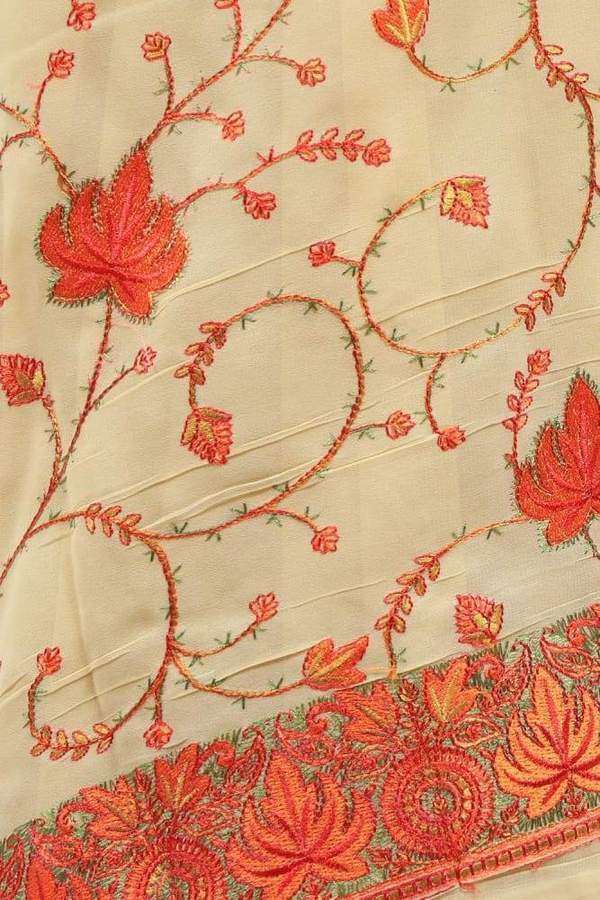
Kashmiri aari sarees are a sozni embroidery art. Sozni Embroidery is hand embroidery. These Sarees are of silk and georgette fabric. This embroidery belongs to Jammu and Kashmir. The saree goes to many skilled hands. As the result, a single sari is the result of the combined hardwork of many workers.
Madhubani Silk Sarees

This saree is a rare combination of tradition with the modern period. The craftsmen make motifs from fingers, twigs, brushes, and nib- pens, etc. This has eye-catching patterns which span from peacocks to depiction of Mahabharata and Ramayan. The craftsman paints the motifs by hand on pure tussar silk. Mithila is the origination of the art of Madhubani.
Kancheepuram Silk Sarees
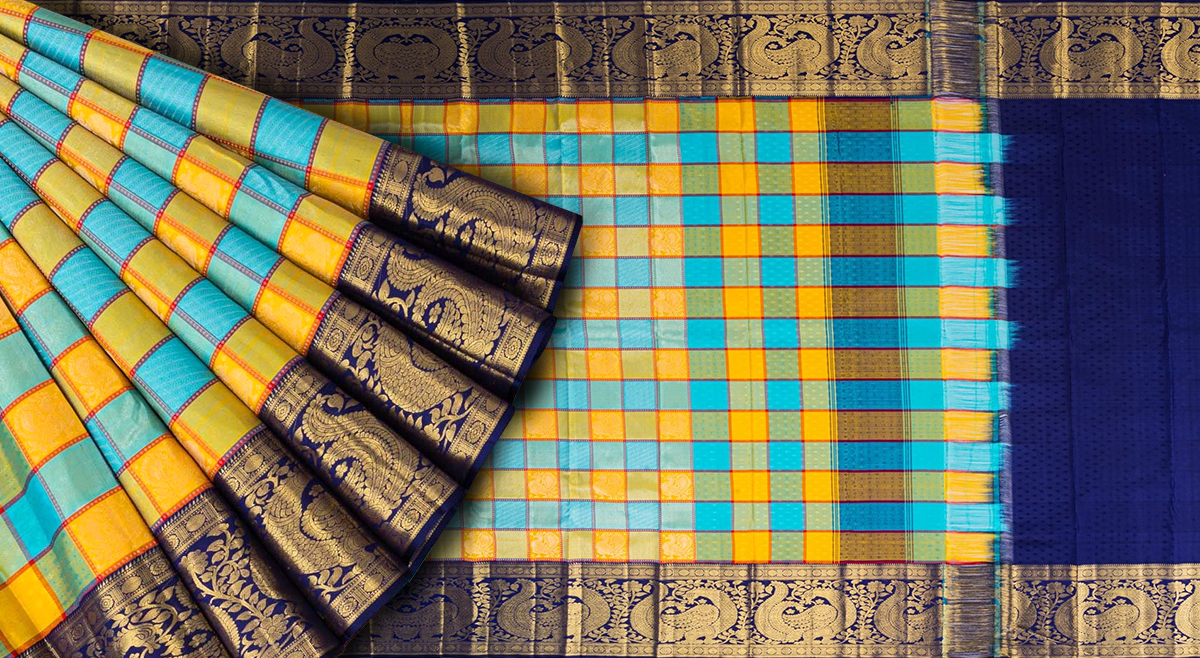
All the way from Kancheepuram, Tamil Nadu. This is the richest saree all across India. These sarees are woven with pure mulberry thred. This thred comes from Kanchipuram. Brides and other women wear this saree on weddings and special occasions respectively. More than 5000 families are involved in this business. This saree gives a sleek and sophisticated look to the one wearing it.
Bandhani Saree
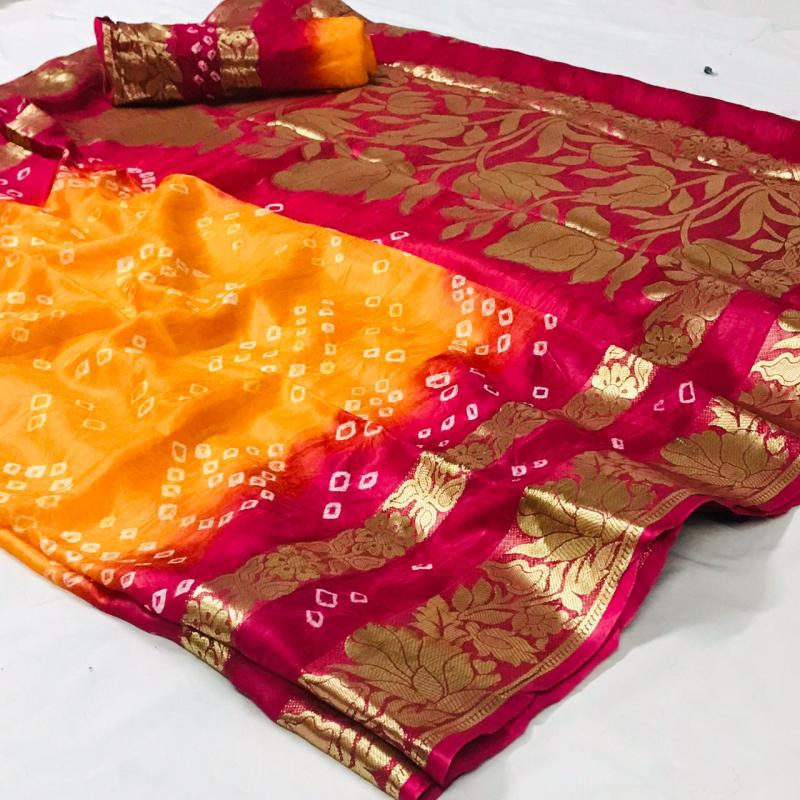
Bandhej or Bandhani saree is a specialty of Rajasthan, the Kutch region of Gujarat, Sindh, and Punjab. In Tamil Nadu, this saree is known as Sungudi. Highly skilled craftsmen create bandhani. Only natural colors are used in its making. The dyeing process is done by hand. Fabric is tied at different points by a thred. This creates different patterns in it. It is done on black, green, yellow, red, or blue. The different colors in bandhani symbolize different occasions. For example, red is the color of a good omen. Hence the bride wears a red bandhani at her wedding.
Chanderi Saree
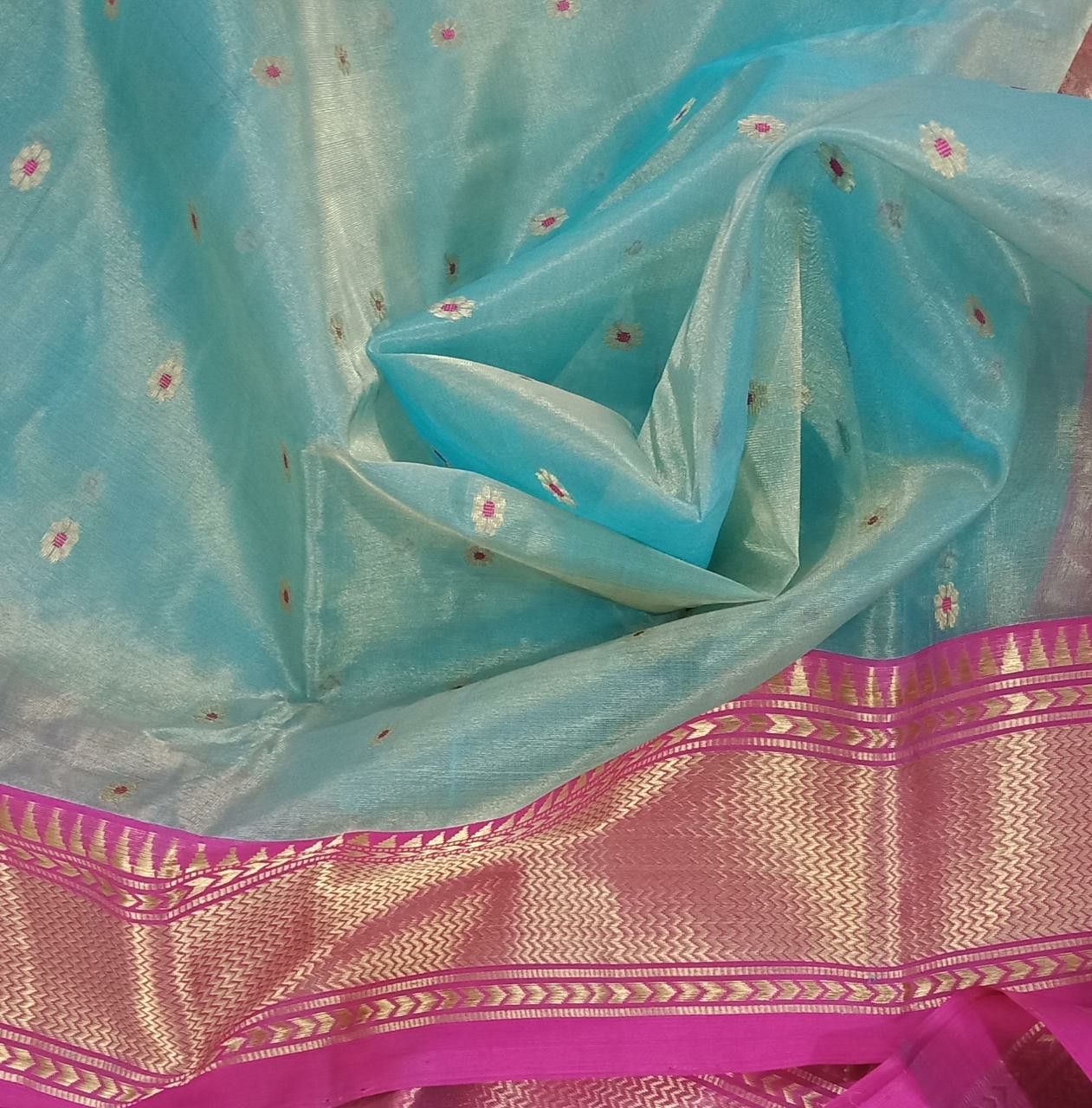
Pure Silk, Chanderi Cotton, and Silk Cotton together make a Chanderi fabric. Different chanderi traditional designs are coins, peacocks, different geometrical and floral patterns. The craftsmen weave the motifs into the chanderi fabric. Gold, silver, zari, and silk work make chanderi famous all over the world. The chanderi sarees have emerged from the borders of Malwa and Bundelkhand. Hence symbolizes the wide culture of both regions.
Nauvari Saree
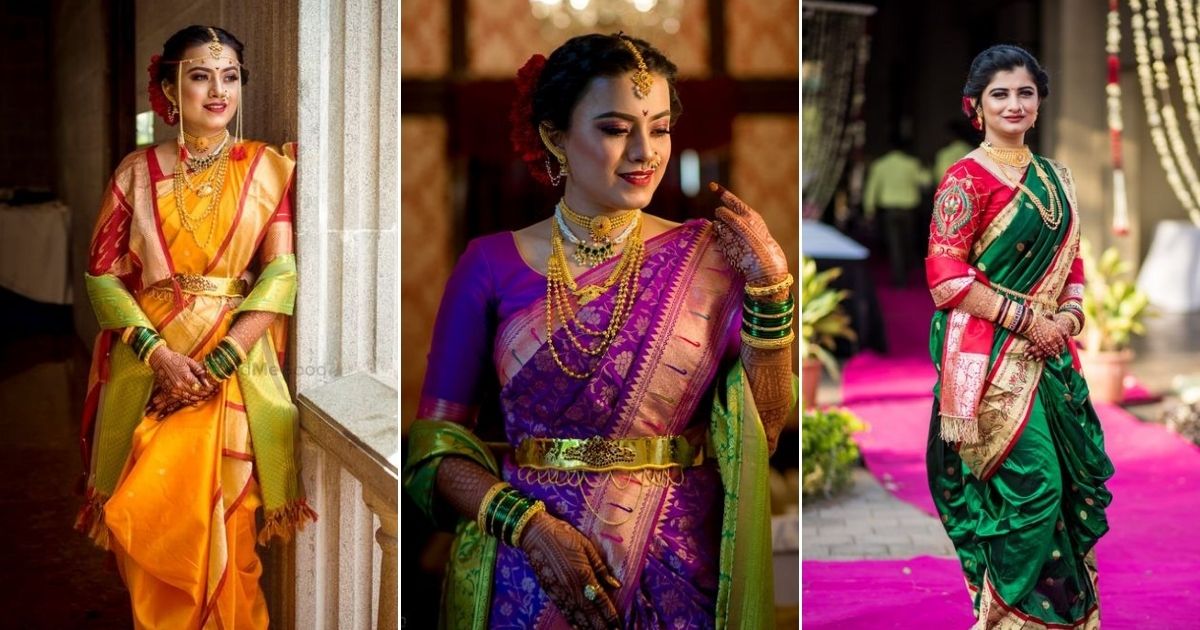
The 9-yard saree or the nauvari saree. It is the pride of Maharashtrian culture. These sarees are of cotton or silk fabrics. Which makes them easy to carry and manage. Nowadays they are being blended by other fabrics too. There are many ways to drape a nauvari. The way of draping nauvari saree differs from region to region. This shows cultural diversity. The women mostly wear bramhani or Peshwari drape. As they stay at a place and don’t bother. The Maharashtrian brides wear nauvari sarees with other authentic accessories.
Kalamkari Saree
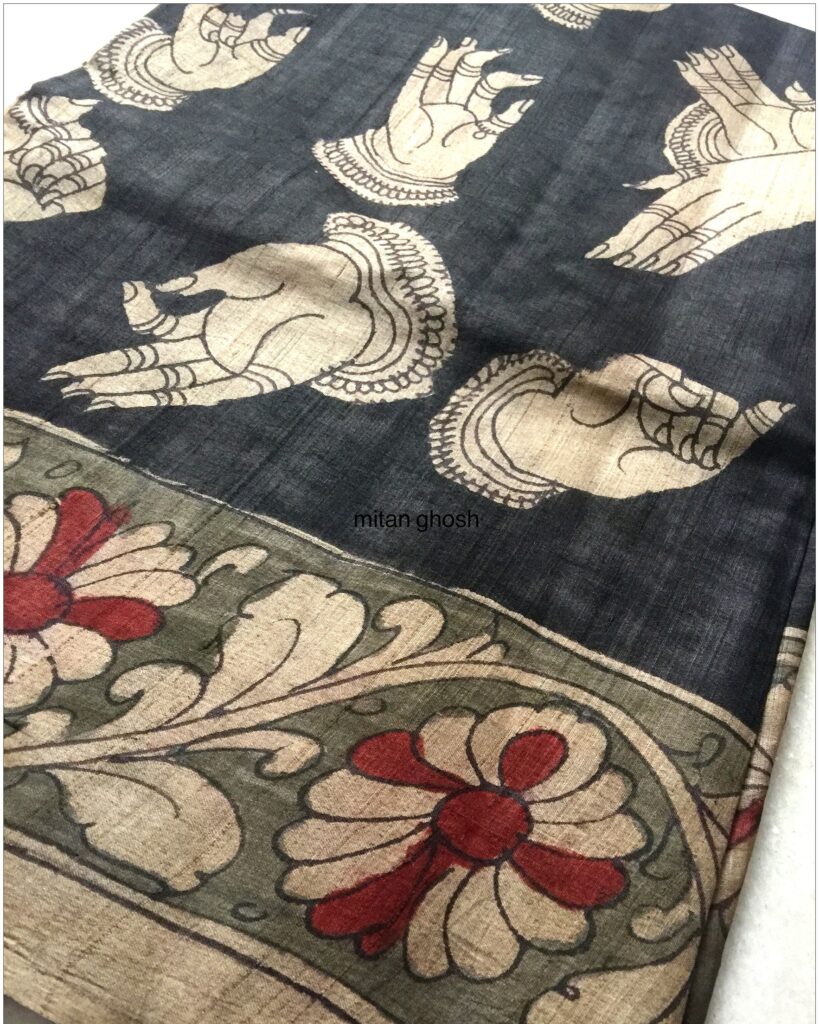
Kalamkari is a style of painting on cotton or silk fabric. By tamarind pen using natural dyes. This art involves 23 tedious processes. Such as dyeing, bleaching, hand printing, block-printing, etc.The designs of kalamkari span from flowers, peacocks, birds to the characters of Mahabharata and Ramayan. Kalamkari usually involves earthly colors like green, rust, black, indigo, etc. The Qualamkars usually belong to the area of Andrapradesh.
Also Read: Benefits of Crying

